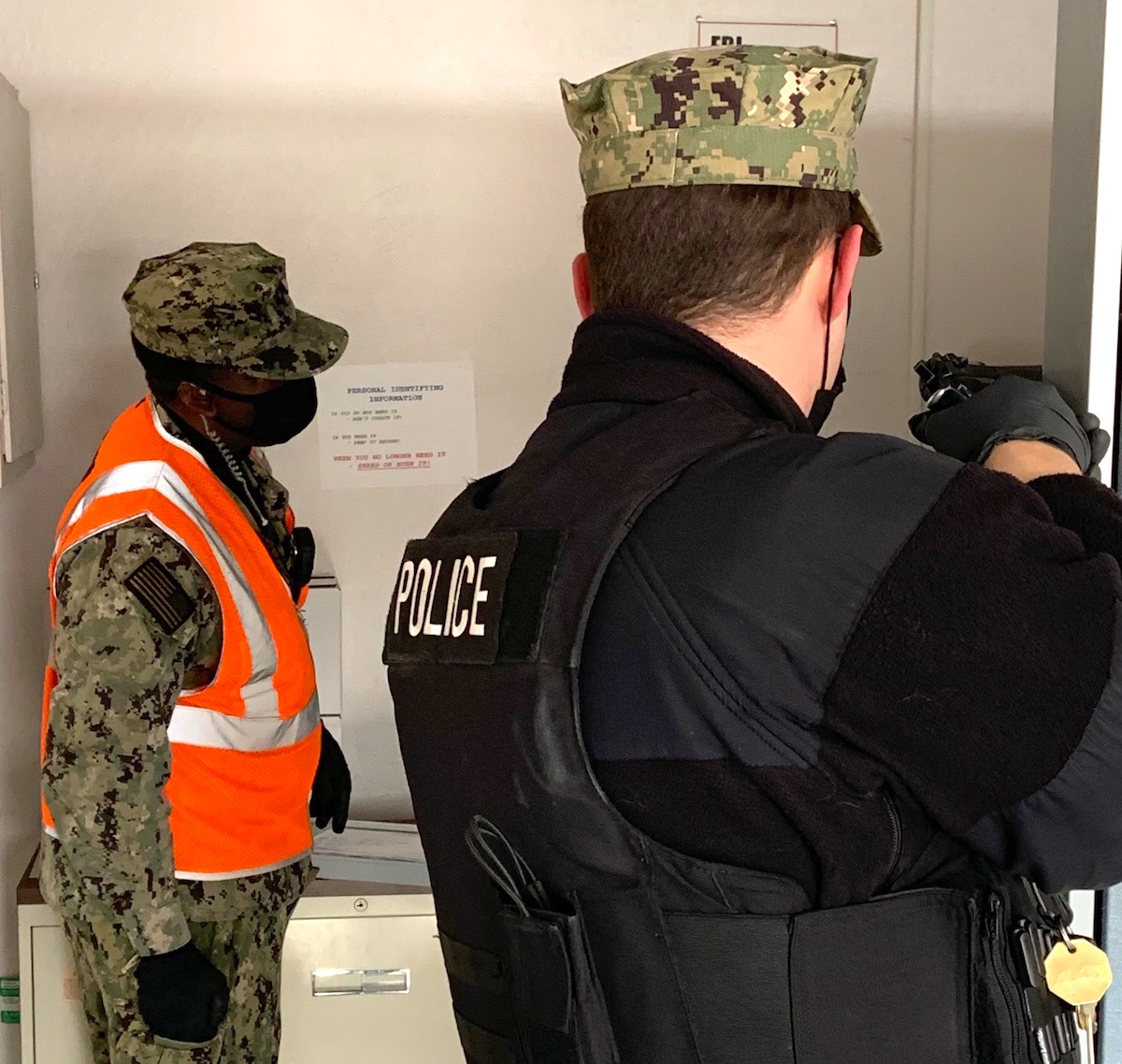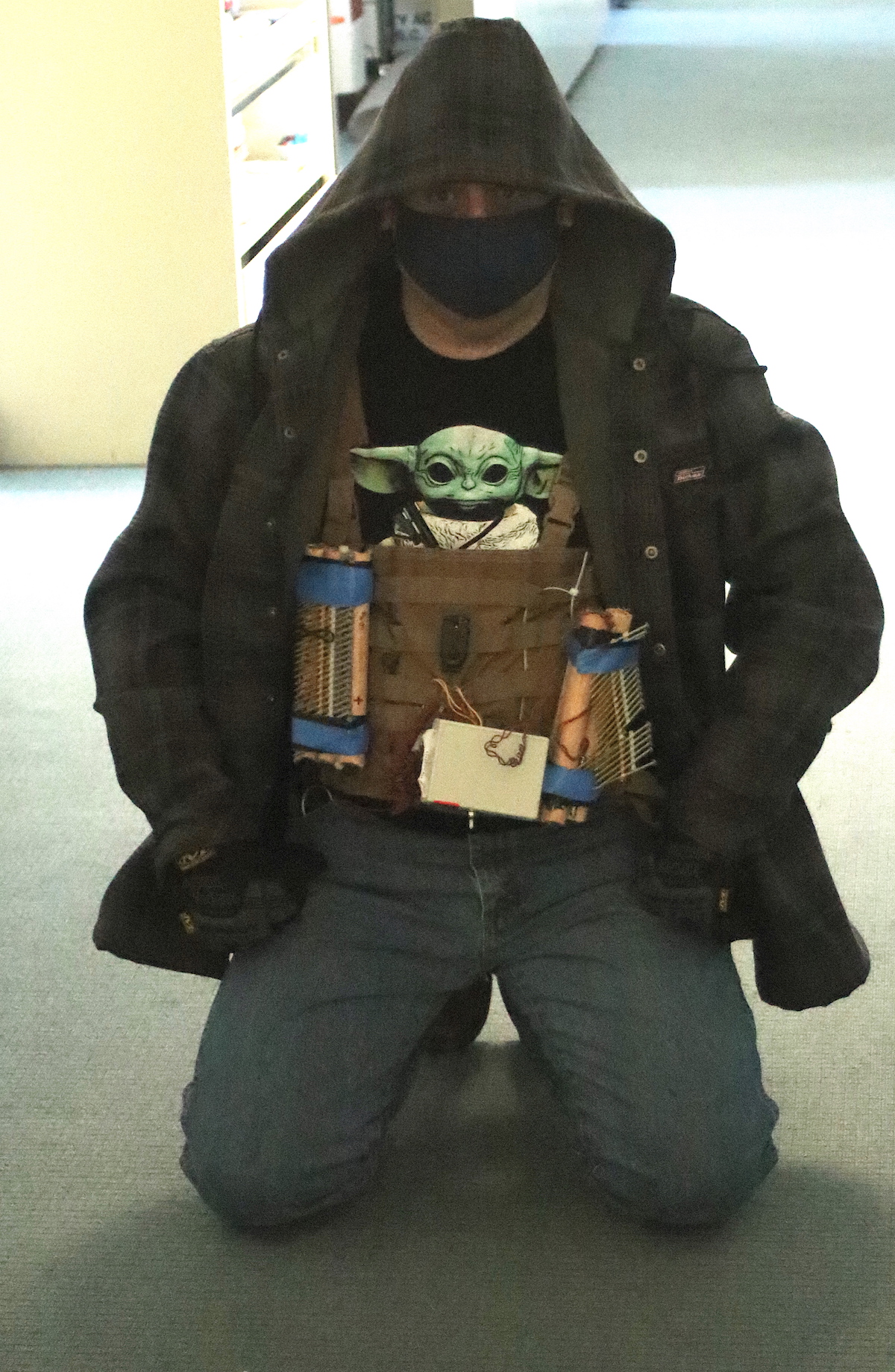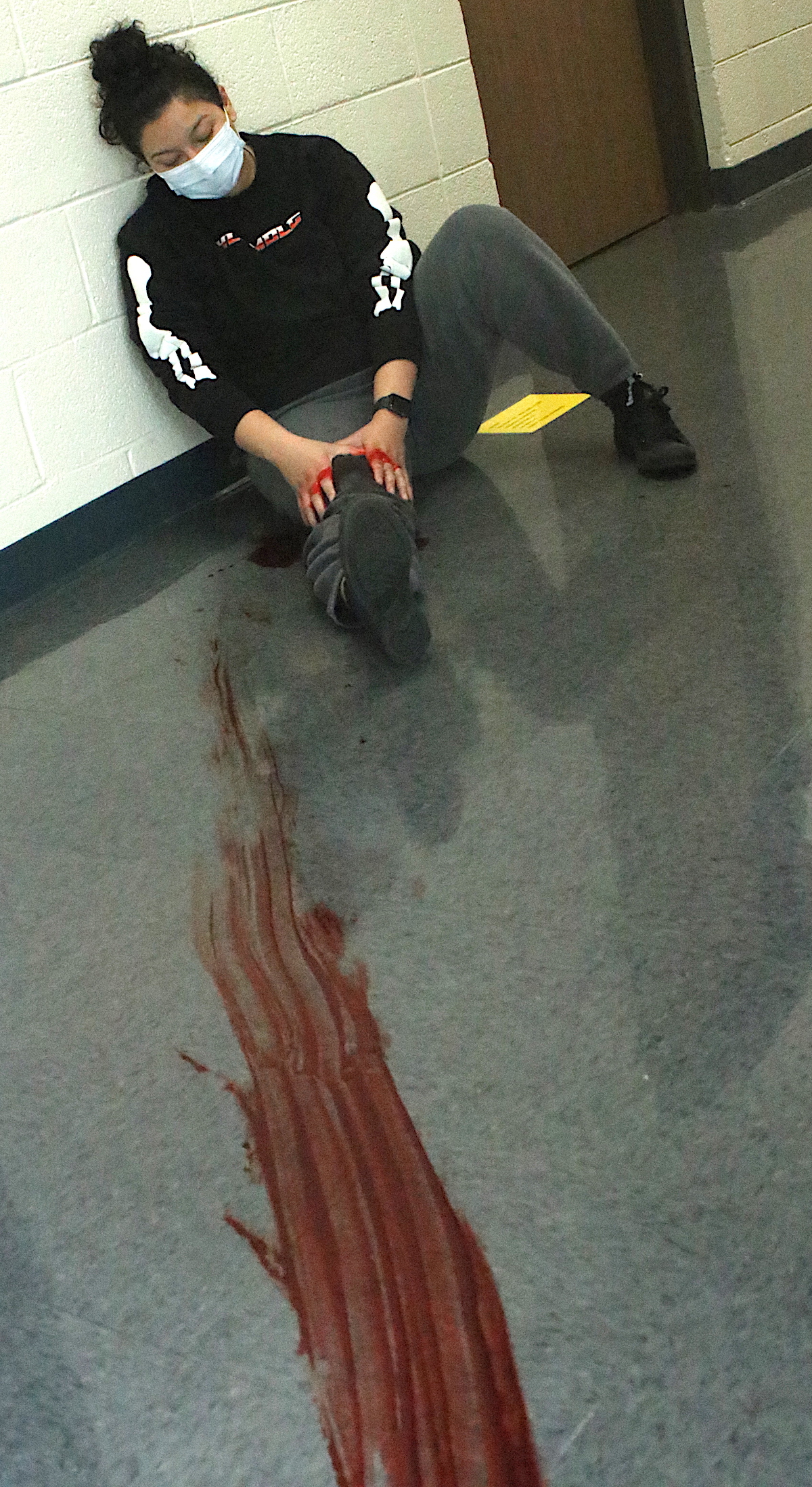With evaluators trailing, a Master-at-Arms cautiously approaches a room where an armed assailant is holed up.
Photo by Steve Ranson.
Security personnel positioned their vehicles near one of the older office buildings north of the Naval Aviation Warfighting Development Center on a cool winter morning.
In this scenario as part of the Navy-wide Citadel Shield-Solid Curtain training, a local report of an active shooter reverberated throughout Naval Air Station Fallon. As with other local exercises of this importance, personnel, though, were also frequently reminded over a loudspeaker and radio that this was a drill.
Responders — both military and civilian personnel from NAS Fallon — descended on the four-story building ready to battle an enemy from within. In this situation, security personnel (Master-at-Arms), other responders and those assigned to the emergency operations center (EOC) worked together to restore normalcy at the air station while the sailors with drawn weapons inside the building neutralized the assailant. Meanwhile, a number of evaluators clutching clipboards and pens watched and took notes as the scenario unfolded. Steve Ranson/LVN
Steve Ranson/LVN
An evaluator, left, watches as a Master-at-Arms or base policeman clears offices.
Security personnel entered the building and worked their way to the fourth floor. They inched their way down the hall, clearing rooms while looking for the assailant. Once they made contact with the disgruntled man, he eventually released his hostage and then entered the hallway before kneeling with explosives strapped to his chest.
“The annual exercise is to ensure our security forces and first responders are at peak readiness to respond to potential security threats,” said Loumarie Chew, who became NAS Fallon’s civilian training officer in October.
Chew, who grew up as a military brat, served in the Navy and naval reserve for 12 years. She said her extended family lives on the east coast, but she said home is where the heart is. She came to Fallon in 2019. Steve Ranson/LVN
Steve Ranson/LVN
An armed assailant with explosives wrapped around his chest kneels in the hallway.
Sometimes, the Navy conducts a drill to test earthquake readiness or assist the city and county with a major chemical spill near a school. This year’s drill, though, became a follow-up from three active shooter incidences within the past 15 months at three naval installations. Chew said the December 2019 events at NAS Pensacola and the Pearl Harbor Naval Shipyard involved active shooters as did a situation last year at NAS Corpus Christi.
Although the coronavirus pandemic restrictions have curtailed a full-blown exercise, Chew said NAS Fallon’s response to an active shooter must keep personnel “at the top of their game” whether a scenario involves a gate runner or shooter.
“We want to prepare for those types of events,” she said.
After the exercise concluded, Chew and other personnel involved with the planning and training received positive feedback for the real-world scenario and for following COVID-19 restrictions with participants wearing facial covering and gloves and keeping their distance. Despite the restrictions, Chew said the Navy must continue its training to face any adversity and for new sailors who must adjust to local situations at NAS Fallon. Steve Ranson/LVN
Steve Ranson/LVN
NAS Fallon training officer Loumarie Chew evaluates the drill.
“The Navy doesn’t stop because terrorists don’t stop,” she said of the constant training.
Eventually, when the pandemic restrictions loosen, Chew said future scenarios will involve local law enforcement and first responders from Fallon and Churchill County.
NAS Fallon’s executive officer, Cmdr. Marshall Chastain, said it’s important for EOC personnel to react to any emergency situation at the air station. Normally, he would be in charge of the EOC, but during this drill he became an evaluator.
“We make them (the scenarios) realistic but maintain safety,” said Chastain, who arrived in 2018 to become the XO. “We must protect the base from such attacks.”
Echoing Chew, he also touted the good working relationship with the civilian partners during previous drills.
During the most recent drill, though, Chastain evaluated the EOC operations and how the officer-in-charge handled the active-shooter threat and a local reporter asking probing questions.
“It goes back to we want the training to be as realistic as we can make it,” he said.
Chastain said the Navy recognizes the value in communicating with the public, and the concerns they may have. Steve Ranson/LVN
Steve Ranson/LVN
A victim rests against a wall after being shot by an assailant.
Although this was a smaller EOC exercise than in previous years, he said the drills still keep the personnel sharp with the operations and maintain a high level of readiness. Chastain said he was proud of the way the base’s personnel planned, executed and responded to the active shooter drill.
“These are not easy things to do,” he added.
 Steve Ranson/LVN
Steve Ranson/LVN Steve Ranson/LVN
Steve Ranson/LVN Steve Ranson/LVN
Steve Ranson/LVN Steve Ranson/LVN
Steve Ranson/LVN